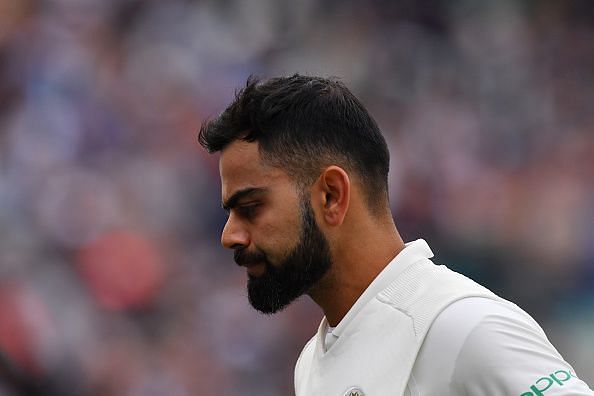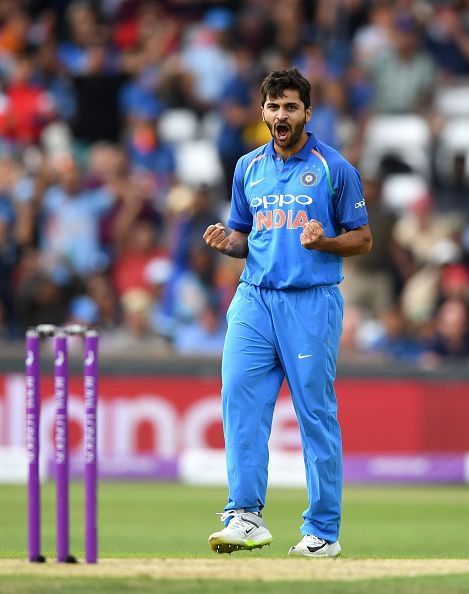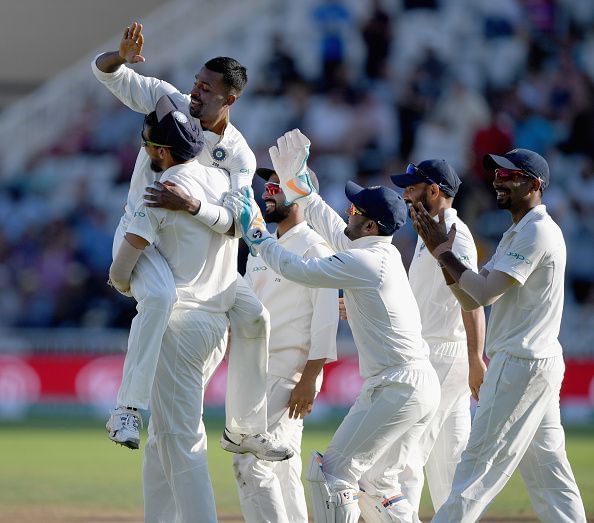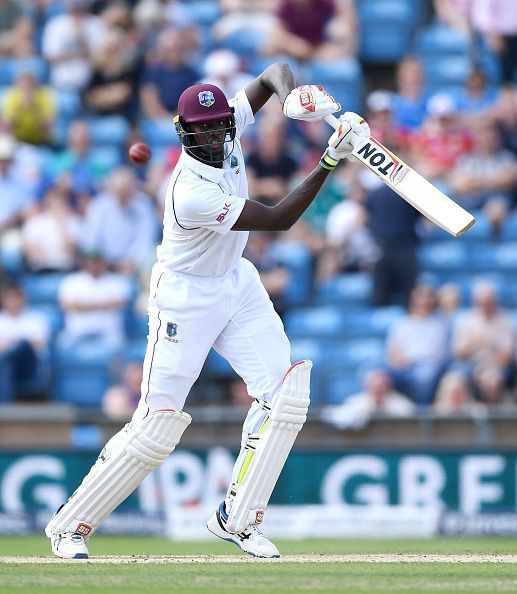
Lessons for India from day 1 of the Hyderabad Test

Against all the suggestions by former cricketers, commentators and experts, India decided to favour ‘consistency’ and retained the full-strength squad from the first Test for the Hyderabad Test. The only change they made was on the expected lines, they gave Shardul Thakur a debut, in place of Mohammed Shami in the playing eleven. This was a wise decision considering the workload of Mohammed Shami and his history of niggles and injuries all through his career. At the same time, Shardul has been a part of the squad many times now, only to warm the benches. So, this was a debut richly deserved, no two ways about it.
Having selected a full-strength squad, India was expected to dominate this Test. West Indies won the toss and decided to play. Though it was a good batting wicket, India had them tottering at 182 for six. But at the end of stumps, West Indies had managed to recover and ended the day at 286 for seven. If not for the wicket of Captain Jason Holder at the fag end of the day, it would have been an even more satisfying day at work for the visitors.
A day like this when everything does not go as per plan or expectation is always one for introspection. The Indian team must look back at this day, and try to learn a few lessons so that in future, they could rectify similar mistakes or at least make a serious attempt to do so. Here are some events from the first day that the Indian think-tank should look at closely and draw appropriate lessons.
Firstly, Shardul Thakur’s Injury: The Indian team ‘management’ must do a better job at managing the work-load and injury worries of their players. In the recent past, there have been too many injuries to players in the squad, either during a match or in nets or practice sessions.

In the England tour, injuries to Bhuvneshwar Kumar and Jasprit Bumrah irreparably damaged India’s chances of a rare overseas victory there. One could always argue that sometimes injuries are not in anyone’s hands. They just happen and are a part and parcel of cricket, especially modern day cricket.
That may be true. But that does not mean that enough precautionary measures to avoid many such cases cannot be taken. Playing Bhuvneshwar in the one-day series knowing fully well that he had some niggles, just before the all-important five-match Test series in England was a decision whose wisdom was difficult to fathom.

Playing Ashwin in the fourth Test when he was clearly not match fit ahead of Ravindra Jadeja in England was another such decision that severely impacted the end result.
In the just-concluded Asia Cup, we saw injuries to several players including Hardik Pandya and Kedar Jadhav, apart from Shardul Thakur himself. Shardul Thakur could send down only 10 balls in his debut Test today before he succumbed to injury – it seems it is the same groin injury that forced him out of the Asia Cup.
What is more intriguing is that Shardul was rushed into playing the Vijay Hazare trophy after ‘recovering’ from that injury, and within a few days, was making his Test debut. The team management is doing an apparently very poor job of managing injuries. It must be very careful in managing the workload of their players and doing the right assessment of players’ fitness.
By including a clearly not-yet-fully-fit Shardul Thakur, they have left Umesh Yadav too much to do as the lone seamer in the playing eleven, and also at the same time denied the in-form Mohammed Siraj a chance to gain some experience of Test cricket on his home ground. One just hopes they don’t make such a mess of ‘managing’ the players during the Australian tour, where it may deny them a chance to create history.
Secondly, the inability to take lower-order wickets: Probably, the most important factor in India losing a closely fought series in England by a one-sided margin of 4-1 was India’s inability to either contain or take the wickets of lower middle order batsmen quickly.
All too often India would put England on the mat by dismantling the top and middle order, only to see the lower middle order flourishing and taking the side to safety. That unfortunate habit (or inability, to be more precise) seems to have stuck with the team even after leaving the English shore.

Having West Indies on the mat with six wickets down for just 182, they let the lesser batsmen in Roston Chase and Jason Holder have a century partnership. But for Holder’s dismissal towards the fag end of the day, Windies would have ended on top, and India would have remained wicket-less in the last session.
Chase is closing in on a hundred and with support from Bishoo and co., he may still hurt not just India’s chances, but also the confidence of the bowlers, if India is unable to prize out the last three wickets quickly on day 2.
India must seriously focus their energy on finding ways to quickly dismantle the lower order in Test matches. If they can take wickets of the more accomplished batsmen, there is no reason why they can’t do the same to batsmen who are much less accomplished.
India’s bowling coach Bharat Arun must do better than just allowing the same old habit to continue. It has gone on for too long. It may not yet hurt India’s chances in this Test, but it will surely hurt when India goes to Australia, just as it did in England.